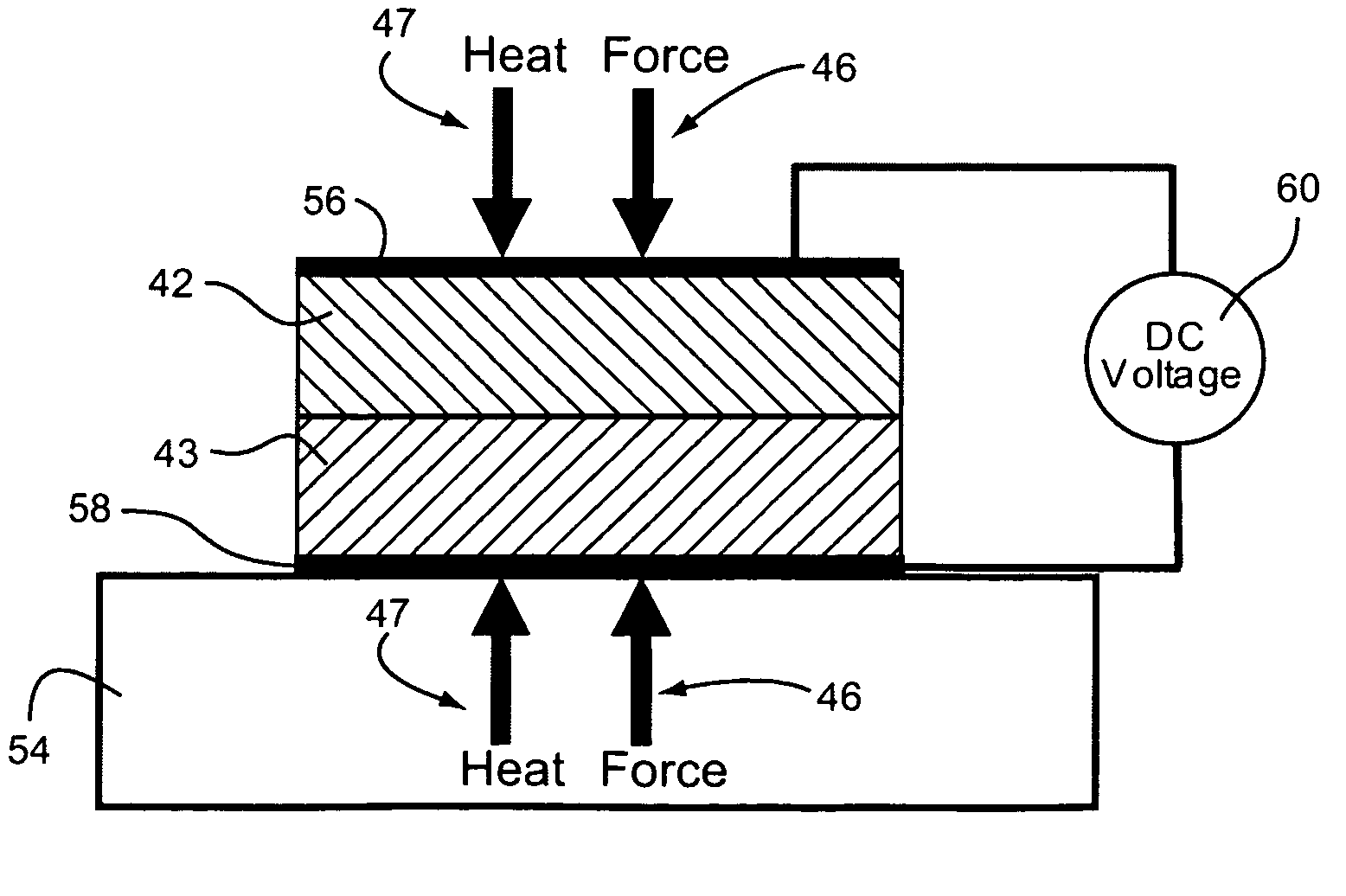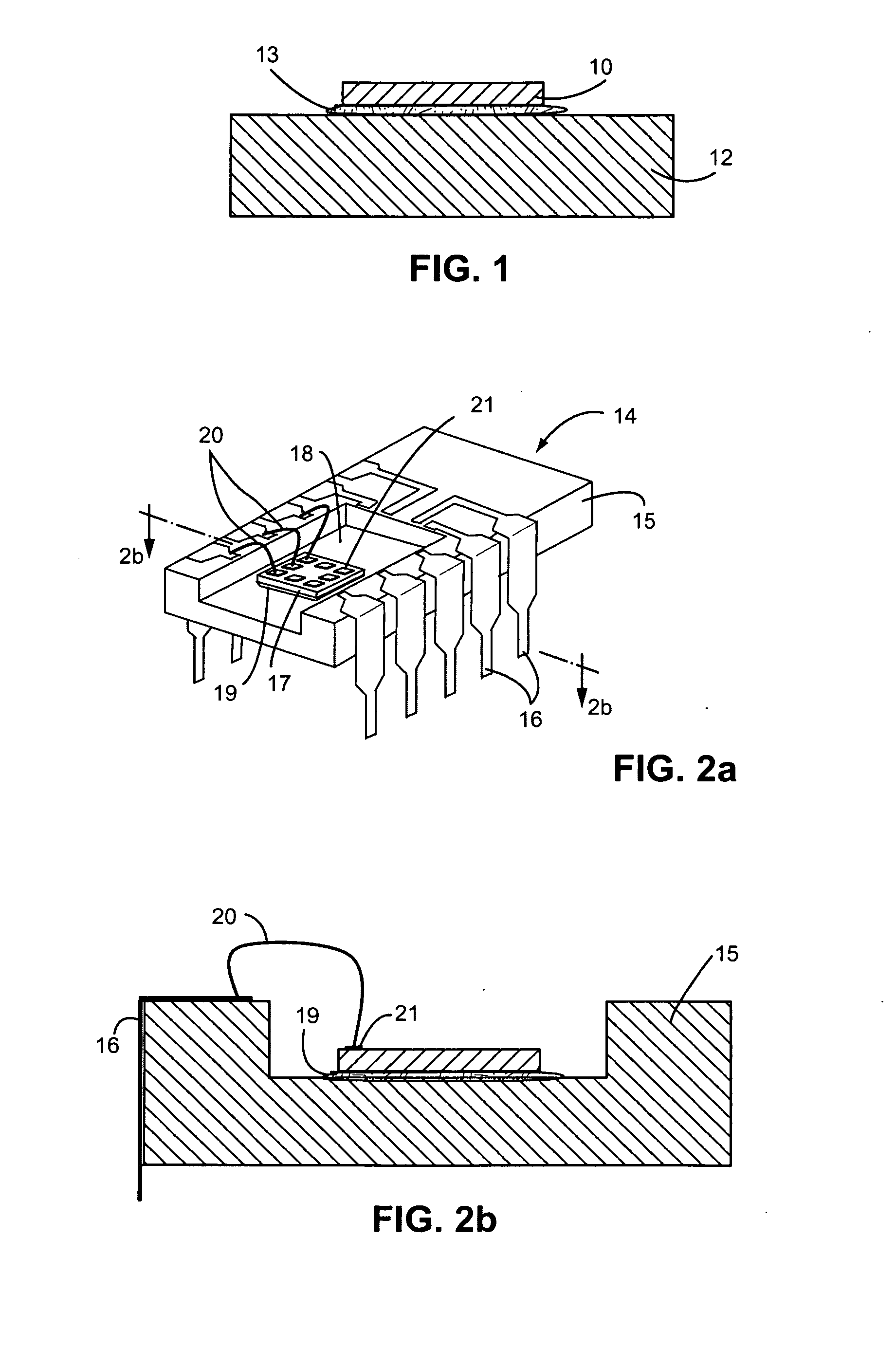Low-temperature wafer bonding of semiconductor substrates to metal substrates
a technology of metal substrates and wafers, which is applied in the direction of semiconductor devices, solid-state devices, electrical equipment, etc., can solve the problems of large built-in stresses between the mated substrates, residual stresses that can have detrimental effects on the performance of semiconductor devices, and large built-in stresses, etc., to achieve low electrical resistance and low thermal resistance
- Summary
- Abstract
- Description
- Claims
- Application Information
AI Technical Summary
Benefits of technology
Problems solved by technology
Method used
Image
Examples
Embodiment Construction
[0051]The present invention is directed to the bonding of substrates together, where one of the substrates is made of a semiconductor material and the other substrate is made from a metallic material, and where this bonding is achieved without the use of any intermediate joining, gluing, or solder layer(s) between the two substrates. The present invention is an improvement of a previously discovered method that has been generally known as wafer bonding that is used to bond two semiconductor substrates together. The present invention can be used for device fabrication, as well as for packaging of devices, and is very useful for many applications, since it can obtain a lower thermal resistance across heterogeneous material interfaces and / or a low electrical resistance across a metal to semiconductor interface, and it can reduce fabrication and packaging complexity, as well as cost for a large and increasing number of MEMS, electronic, and photonic devices and systems.
[0052]FIG. 1 is a...
PUM
| Property | Measurement | Unit |
|---|---|---|
| surface smoothness | aaaaa | aaaaa |
| surface roughness | aaaaa | aaaaa |
| diameter | aaaaa | aaaaa |
Abstract
Description
Claims
Application Information
 Login to View More
Login to View More - R&D
- Intellectual Property
- Life Sciences
- Materials
- Tech Scout
- Unparalleled Data Quality
- Higher Quality Content
- 60% Fewer Hallucinations
Browse by: Latest US Patents, China's latest patents, Technical Efficacy Thesaurus, Application Domain, Technology Topic, Popular Technical Reports.
© 2025 PatSnap. All rights reserved.Legal|Privacy policy|Modern Slavery Act Transparency Statement|Sitemap|About US| Contact US: help@patsnap.com



